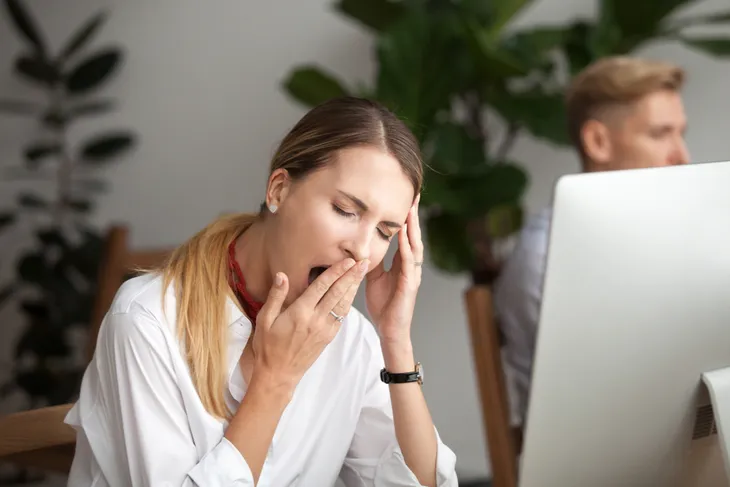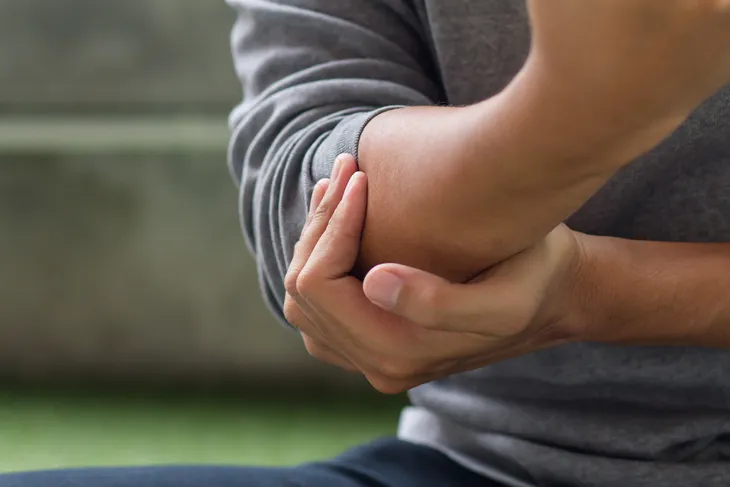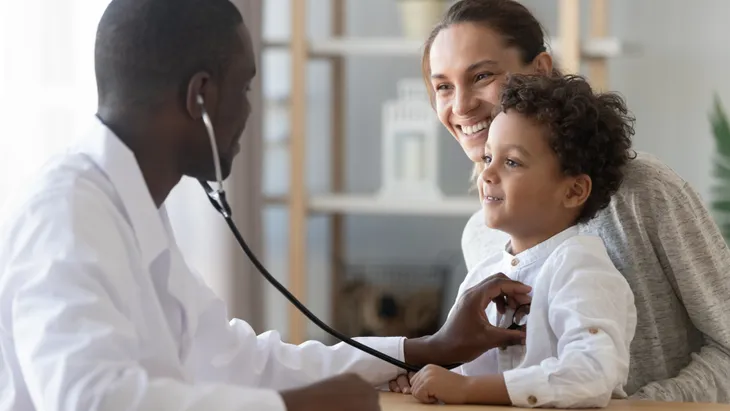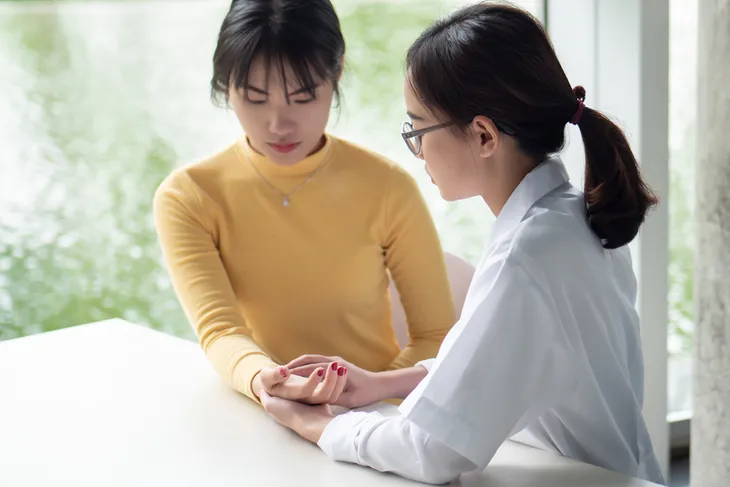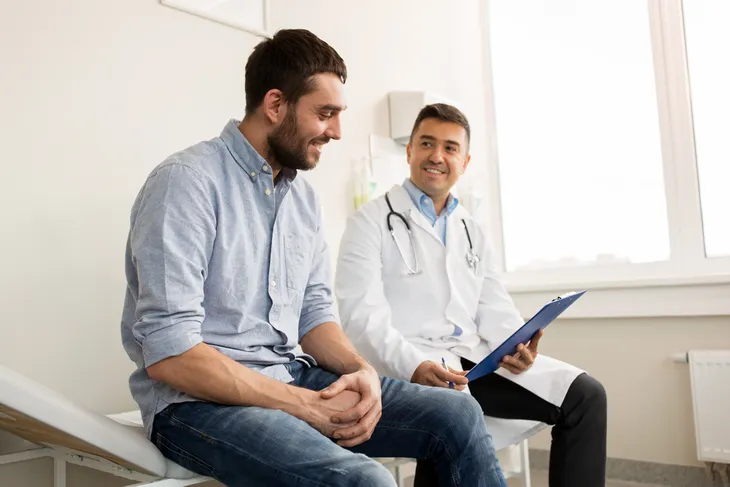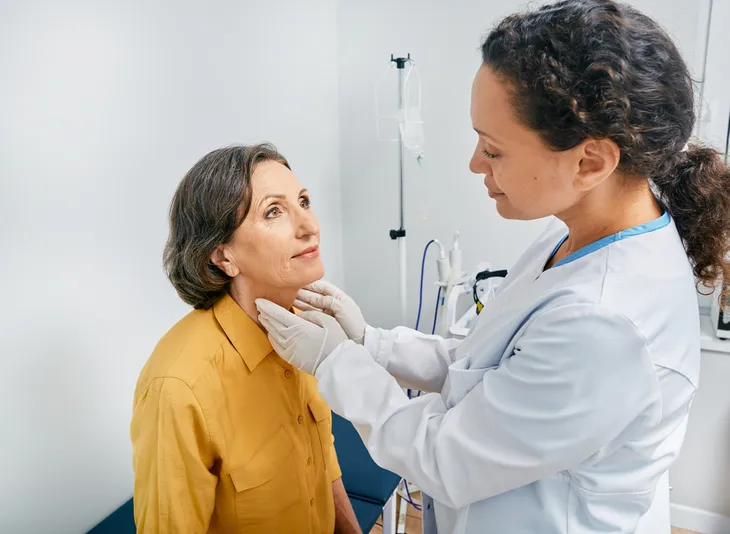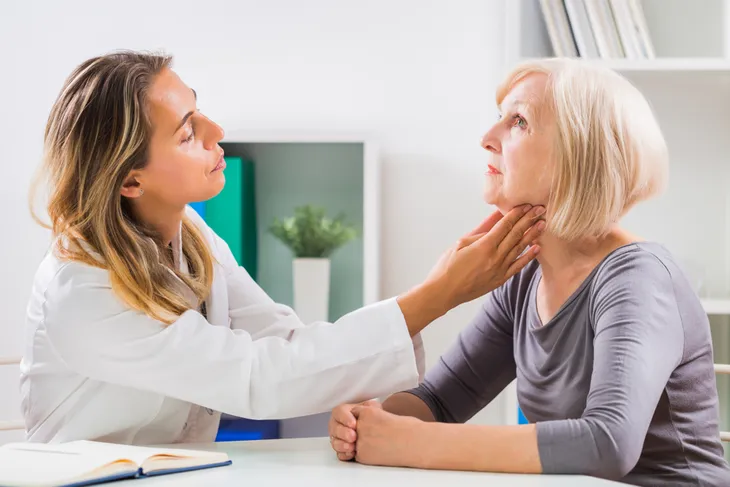- Although certain symptoms are very specific to the subtype of leukemia, there are several common signs of the disease to be on the lookout for.
- Some symptoms to watch for include fever and chills, swollen lymph nodes, and persistent fatigue.
- Many of the symptoms are common in other unrelated illnesses which is precisely why leukemia is hard to detect.
The Mayo Clinic defines leukemia as “cancer of the body’s blood-forming tissues.” The disease most commonly affects white blood cells, which mutate and become cancerous. These cells are primarily produced in the bone marrow, but certain types are also made in the lymph nodes, spleen, and thymus gland.
Each of the seven subtypes of leukemia are classified based on how quickly the disease progresses—suddenly (acute) or slowly (chronic)—as well as which specific cells are affected. Although certain symptoms are very specific to the subtype of leukemia, there are several common signs of the disease. Let’s take a look at the common signs and symptoms of leukemia.
Fever or Chills
As leukemia compromises the body’s blood cells, which are essential to a well-functioning immune system, those affected by the disease may become ill more often.
Symptoms of a cold or flu—such as a fever, chills, or infections—are among the most common indicators a person may be battling leukemia. However, since these symptoms resemble common illnesses, they can be easily overlooked.
 Prostock-studio / Shutterstock
Prostock-studio / ShutterstockPersistent Fatigue
Fatigue is another common symptom of leukemia that is often dismissed, as it can be easily attributed to day-to-day activities. But if you experience fatigue persistently, regardless of how much rest you get, it is a strong indication of a more serious underlying cause.
In many cases, fatigue or weakness is the result of anemia (a lack of red blood cells to carry oxygen throughout the body), which commonly coincides with leukemia.
Easy Bruising or Bleeding
People with leukemia often have fewer-than-normal platelets in their blood, which can cause them to bruise or bleed easily, and heal very slowly. Recurrent nosebleeds are a common symptom, as are bleeding gums and, in women, heavy menstrual cycles.
The affected individual may also notice tiny, flat, red spots on their skin. These are called petechiae and are caused by bleeding just below the surface of the epidermis.
Swollen Lymph Nodes
The lymph nodes, which are integral parts of the body’s immune system because they fight viruses and bacteria, can become swollen in people who have leukemia. According to the American Cancer Society, this is because the nodes are “work[ing] to filter out the ‘bad’ cells.”
Although lymph nodes are located throughout the body, the largest clusters are in the throat, armpits, and groin. These places are where a person will typically notice them when they become enlarged.
The source also says an affected individual may notice swelling in the abdomen, typically caused by a build-up of leukemia cells in the liver or spleen. This swelling may present itself as “fullness or swelling of the belly or feeling full after eating only a small amount.”
Bone or Joint Pain
Pain or tenderness in the bones and joints can also be an indicator of leukemia. The Leukemia & Lymphoma Society of Canada says this is because the bone marrow can become “overcrowded with cancer cells.”
The source goes on to say that these aches most often occur in the “long bones of the arms and legs and in the ribs and sternum of the rib cage.” In some cases, the affected individual may also develop pain and swelling in large joints like the hips and shoulders.
Excessive Sweating
The body’s immune system requires plenty of sleep in order to maintain its strength while battling a disease. But for those with leukemia, sleep is often plagued with night sweats, where the individual wakes up during the night soaked from their own sweat.
In speaking with Everyday Health, Dr. John Salerno says that night sweats happen because the body’s temperature rises to try and fight the cancer. This isn’t always why night sweats occur, however; they can also be an indication that the body is fighting an infection, so it’s important to report this symptom to a doctor.
Less Common Symptoms
Although less common, there are other possible symptoms of leukemia. Leukemia Care says other possible symptoms to look out for include weight loss, nausea or vomiting, upset stomach, and headaches. But that’s not all.
The source says, numbness in the hands or feet, heart palpitations, loss of concentration, muscle pain, back pain, and itchy skin can also be symptoms of leukemia. Some of these can be symptoms of other conditions, or they can be harmless, so it’s best to have any unusual or unexplainable symptoms checked out by your doctor.
Symptoms by Age
Certain leukemia types are more common in certain age groups. As such leukemia symptoms can differ based on your age. For example, a child with leukemia is more likely to experience stomach pain whereas a senior is more likely to experience breathlessness.
It’s important to be aware of the different types and symptoms by age to detect the cancer early. Let’s take a look at the common symptoms by age next.
Symptoms in Children Under 16
The most common type of leukemia for children under 16-years old is acute lymphoblastic leukemia. Children with this type of leukemia often experience an upset stomach, repeated infections, and fever. It’s also common to experience joint or bone pain, bruising or bleeding, or fatigue.
If your child develops any of these symptoms, take them to the doctor. These symptoms may not always indicate leukemia but it’s better to have them checked out.
Symptoms in Adults Age 16 to 24
Acute lymphoblastic leukemia is also the most common type of leukemia for young adults ages 16- to 24-years. Some symptoms from the younger age group do overlap into this age group but there are a few new symptoms to be on the lookout for.
For starters, like children, young adults may experience fever, fatigue, bone or joint pain, and bleeding or bruising. However, it’s also common to experience headaches, and weakness or breathlessness.
Symptoms in Adults Age 25 to 49
The most common type of leukemia in adults age 25- to 49-years is acute myeloid leukemia, explains Leukemia Care. The common symptoms for this age group are fatigue, breathlessness or feeling weak, and fever.
Bone or joint pain and bruising or bleeding are also common. If you repeatedly get infections, this could also be another possible symptom of acute myeloid leukemia.
Symptoms in Adults Age 50 to 64
Adults aged 50- to 64-years are also at risk of developing acute myeloid leukemia. Symptoms are the same as the previous age group from fatigue and fever to breathlessness, joint pain and frequent infections.
Acute myeloid leukemia isn’t the only common type of leukemia for this age group though. Chronic lymphocytic leukemia is also common.
Symptoms in Adults Over Age 64
The most common type of leukemia for seniors age 64-years and older is chronic lymphocytic leukemia. Common symptoms to be on the lookout for include fatigue, weakness, breathlessness, fever, and bruising or bleeding. Other common signs include sudden weight loss and swollen lymph nodes.
As we mentioned, many of these symptoms are common in other unrelated illnesses. This is precisely why leukemia is hard to detect. That said, if you’re experiencing more than one of these symptoms, contact your doctor for a proper diagnosis. Leukemia is more treatable when detected early.

